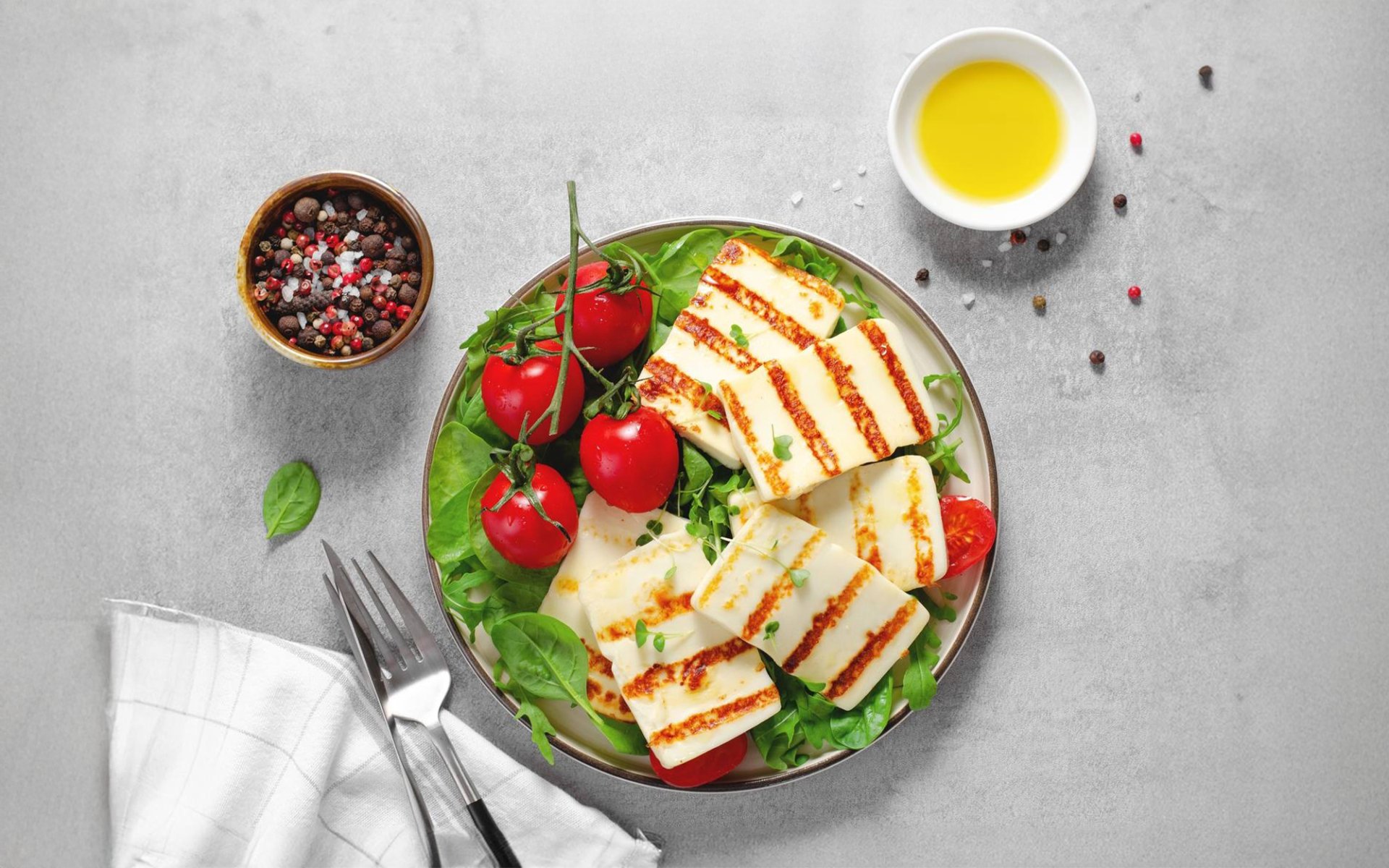Haloumi

Haloumi is a salty, firm white cheese made from sheep, goat, or cow's milk. Its unique characteristic is that it doesn't melt when heated but softens and turns golden brown when grilled or fried. It's commonly enjoyed with salads, sandwiches, or grilled on its own. Today, Rimping Supermarket invites you to delve into the history behind this distinctive cheese.
Origins in the Byzantine Era and Local Wisdom
The origin of Haloumi is believed to date back to Cyprus during the medieval period of the Byzantine Empire. Some evidence suggests that Haloumi was produced there as early as the 4th century. It is said that the Byzantines produced Haloumi for food preservation by brining it in saltwater.
In later eras, the culture of making Haloumi spread throughout Cyprus, often produced in rural households. Furthermore, many villages and communities came together to form cooperatives to continuously improve Haloumi production, with each village having its own unique techniques and secret ingredients.
Traditional Haloumi Making Process
The traditional method of making Haloumi begins with heating fresh milk. Then, rennet, a natural enzyme, is used to coagulate the milk. Once the milk starts to curdle, it is cut into pieces and soaked in brine for about 12 hours. The brine acts as a natural preservative. After the designated time, the cheese curds are removed and soaked in plain water for another 2 hours. They are then placed on cheesecloth to dry and stored in an airtight container in the refrigerator.
Haloumi : A Cypriot Cultural Heritage and Consumption
Over the years, Haloumi has become an integral part of Cypriot cultural heritage, as its preparation is directly linked to rural life and social cohesion, characteristics unique to Cypriot villages even today. To this day, traditional Haloumi continues to be produced according to custom in small family dairies scattered across Cyprus.
Cypriots often consume Haloumi with breakfast, serving it with bread, sandwiches, tomatoes, and olives. In the summer, it is frequently grilled and served with watermelon and salad.
To the Global Market and Economic Value (20th Century - Present)
In the 20th century, Haloumi's popularity spread beyond Cyprus. Cypriot emigrants introduced Haloumi to other regions, such as the United Kingdom, Australia, and the United States. This led to Haloumi appearing in international markets and gaining significant popularity.
Currently, Haloumi is the second most important export product of Cyprus, with an annual value exceeding 250 million Euros. Product exports continue to show an upward trend, being exported to over 50 countries worldwide, clearly demonstrating the cultural and economic value of this cheese.


